How To Catch Tailor | An Ultimate Guide
Are you looking to step up your fishing game by targeting Tailor aka the Bluefish? If so, then this article is going to be a delight for you! In this article, we will be discussing everything that is to know about Tailor and how to catch them.
We’ll be discussing everything you need to know about Tailor fish, including their size, habitat and the best season to catch them. You’ll also learn where is the best place to catch them as well as what type of equipment you will need such as rods, reels and rigs. Lastly, we’ll give some tips on how to target and catch this exciting yet challenging fish successfully.
This guide will provide you with the information necessary to have a successful Tailor fishing experience, while having great fun along the way. So what are you waiting for? Let’s get started!
Disclosure: We only endorse products we’ve personally used or that have come highly recommended by our trusted peers. We’re proud affiliates for some of the products on our site, and as such, we may get a small commission if you purchase through one of our referral links. However, there’s no extra cost to you. Check out our affiliate disclaimer in our Privacy Policy if you’d like to learn more.
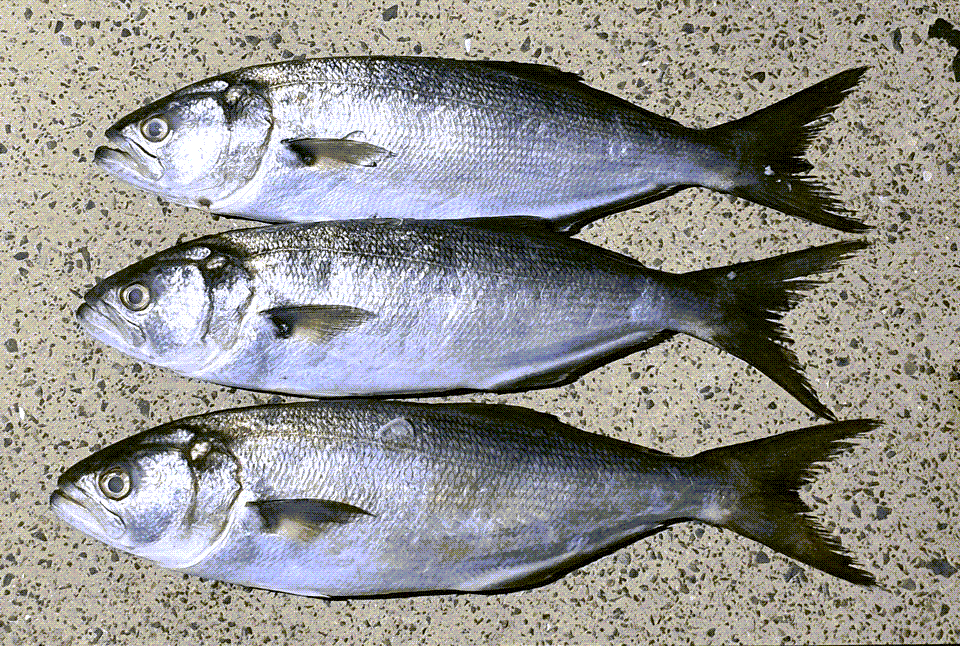
How To Catch Tailor – Facts
Tailor Facts
Scientific Name : Pomatomus Saltatrix
The scientific name for tailor fish is “Pomatomus saltatrix”. This species of fish is also commonly known as Bluefish or the Australian Salmon. Depending on their location, a tailor may have many different names, including Elf, skipjack, Marine Piranha, Chopper, shad and greenback.
Characteristics
Tailor are typically a medium-sized fish, with adults averaging around 20 inches in length. They have a streamlined body and scales that are small, smooth and silvery. Their dorsal fin is long with around 15 spines, and their pectoral fins are narrow. They have relatively large heads and a forked tail. The average weight for a Tailor fish is 0.5 to 1.5 kilograms, but they can grow up to 14 kilograms and live 10 years. With that said, most of the Tailors that are caught are between 30cm and 50cm long.
Habitat/Location
Tailor can be found in a wide range of habitats, from estuaries, offshore reefs and coastal waters of the Atlantic, Pacific, and Indian Oceans. They are found in both saltwater and freshwater, and prefer deeper water. They are most commonly found in schools, and prefer areas where there are lots of baitfish or other prey.
Diet of Tailor
Did you know the common name “Tailor” originates from the fish’s ability to cut through fishing nets with its sharp teeth? Tailor are voracious predators that feed on a wide range of fish, crustaceans and mollusks. They hunt by chasing down prey and using their powerful jaws to grab and kill their meal quickly. They typically feed during the day, often in large schools. Tailor’s food source largely depends on the season and location, with some of their favourite food items including pilchards, anchovies, sardines, herring, mullet, garfish, squid and other species.
Tailor Legal Size & Catch Limits in NSW
According to the Department of Primary Industries in NSW, the legal size limit for Tailor is 25 cm (9.8 in), and there is a bag limit of 10 fish per person. It is important to follow these size and catch limits when fishing for Tailor, as it helps to ensure sustainable populations of this fish. Be sure to visit the DPI or your local fishing regulations website to get the most up-to-date information about the size and catch limits for Tailor in your area.

Eating Qualities
Tailor don’t have a great wrap when it comes to their taste, but that doesn’t mean they aren’t a good choice for eating. Although some people find them to be too oily or overly fishy tasting, others enjoy their firm, flaky texture and rich flavour. This is especially true when they’re eaten fresh. For the best-tasting tailor, gut and ice them as soon as you catch them. Ideally, you should eat them within a day or two for the freshest flavour. If not, the fillets will become flaky or mushy.
When they’re prepared correctly, tailor are delicious and are commonly eaten in a wide range of cuisines. Whether you are grilling, frying, or baking them, you are sure to enjoy the taste and texture of these fish. Their meat is also excellent for making fish cakes, fish burgers and fish tacos.
How To Catch Tailor – Tip #1
How To Catch Land-Based Tailor

Now that we have obtained the basic information, let us discuss how to catch land-based tailor. To start things off, you will need a fishing rod and tackle. We will get into more specifics later on in this guide.
When targeting tailor from the shore, it is helpful to find a spot where the fish are likely to be congregating. Tailor often feed on mullet or other baitfish, so look for places where there is a high volume of these smaller fish. Once you’ve found an area with lots of baitfish, you will want to set up your rod and reel. A sturdy surf rod is recommended for targeting tailor from the shore or the rocks. You may also want to consider using a reel with a high gear ratio to ensure a fast retrieve.
Next, you will need to select your bait and rig. Large tailor are often caught using pilchards, live baits such as mullet or garfish, or soft plastic lures. You will also need to choose a suitable leader and hook.With the right bait and rig, you are now ready to start casting for tailor. Try casting out into the feeding area and slowly retrieve your bait, pausing it occasionally to allow the Tailor to bite. If you see any schools or small fish nearby, you can also try casting your bait or lure into this area.
If you are having trouble catching Tailor, don’t be afraid to experiment with different types of bait and lures until you find something that works. To increase your chances of success, you may also want to consider using berley or chumming. By adding some fish pieces and ground-up bait into the water, can attract the Tailor to your spot, making it easier to cast out and catch them.
Night fishing is also a good option when targeting Tailor from the shore. When fishing at night, remember to take extra care, be aware of your surroundings and safety. You may also want to consider using a lighted lure or jig, which can be a great way to attract and catch the attention of these fish. At the end of the day, if you want to be successful in targeting tailor, you will need to spend some time and effort. But with a little bit of practice and some good knowledge about where and when to fish for these fish, you can start catching some great-tasting tailor from the shore.
Keep reading as we dive deeper into all the points mentioned above in much greater detail.
How To Catch Tailor – Tip #2
What’s The Best Season To Catch Tailor?
There is no one “best” season to catch tailor, as different species of tailor can be found in different areas throughout the year. However, many anglers find that the best time to catch these fish is during late spring and early summer.
During this time, the schools of baitfish that tailor feed on are typically more abundant, making it easier to catch these fish. Additionally, the water temperature is warmer during this time, which can make the fish more active and more likely to bite.
The best months to catch Tailor in Sydney NSW are November, December, January and February, as the water temperature is highest during these months.
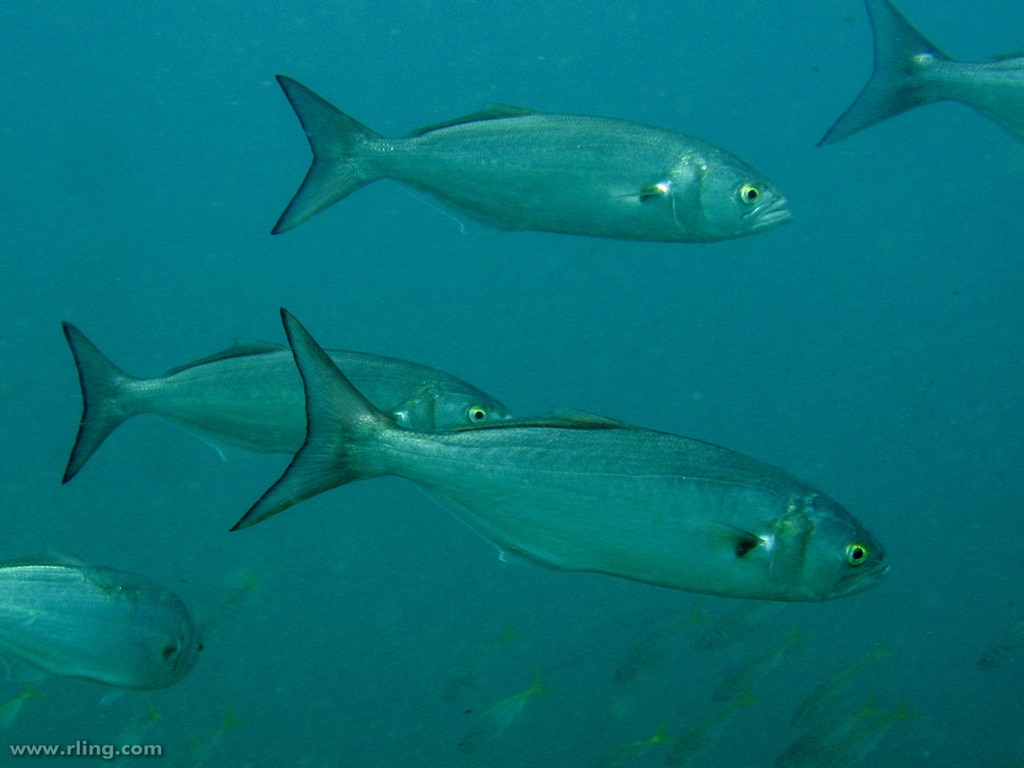
What Is the Best Tide to Catch Tailor?
The best tides to catch tailor vary depending on the specific location. For instance, in Sydney, the best tides are usually around an hour before or after high tide. However, you may want to do some research about the specific spot you are targeting tailor from, as sometimes certain areas may be more conducive to fish activity at different times of day or on different types of tides.
In general, you will want to try to time your fishing trip for the time of day or even the season that the fish are most likely to be feeding.
How To Catch Tailor – Tip #3
Where Can You Catch Tailor?
Tailor are most commonly caught from the shore in estuaries, beaches and rocks. Estuaries provide an ideal habitat for these fish, as they allow them to feed on the schools of baitfish and smaller fish that live in these areas. Some of the most popular locations for targeting tailor from the shore include beaches, rocky shores, and jetties or piers. These areas provide easy access to the water and are often home to schools of baitfish, making them an ideal spot for catching tailor.
Catching Tailor From Estuaries

One of the best places to target tailor from estuaries is along inlets, particularly those that are calmer and less exposed. Tailor will often congregate in these areas, making it easier to catch them. If you are targeting tailor from an estuary, some great bait options include pilchards, live baitfish like mullet or garfish, or soft plastic lures.
Targeting tailor at estuaries is one of the easiest ways to catch these fish, as the schools of baitfish in these areas make it easy for anglers to cast out and hook a fish. Plus, given the calm water typically found in estuaries, it is often easier to land a fish once you have caught it. Making it a great option for kids or novice anglers looking to get into fishing.
Tailor Fishing From The Rocks
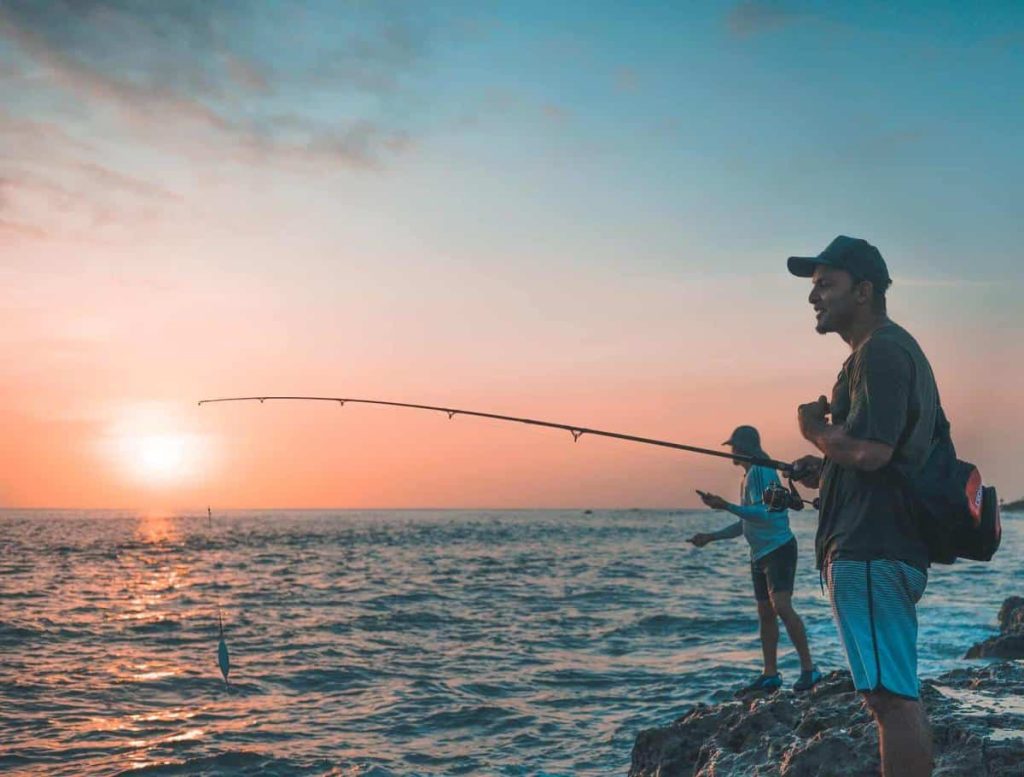
Tailor can also be caught from the rocks, although this is typically a more challenging fishing technique. In order to successfully catch Tailor from the rocks, you will need to have good knowledge of the tides and swimming areas for these fish.
When fishing from the rocks, it is also important to use a strong, robust rod and reel that can handle the weight of these fish. You will also need to choose strong casting tackle, as well as a sturdy line and leader. Some of the best techniques for catching Tailor from the rocks include using bait and lures. Casting out into deep water and slowly retrieving your lure or bait can be an effective way to catch these fish.
Catching Tailor From The Beach
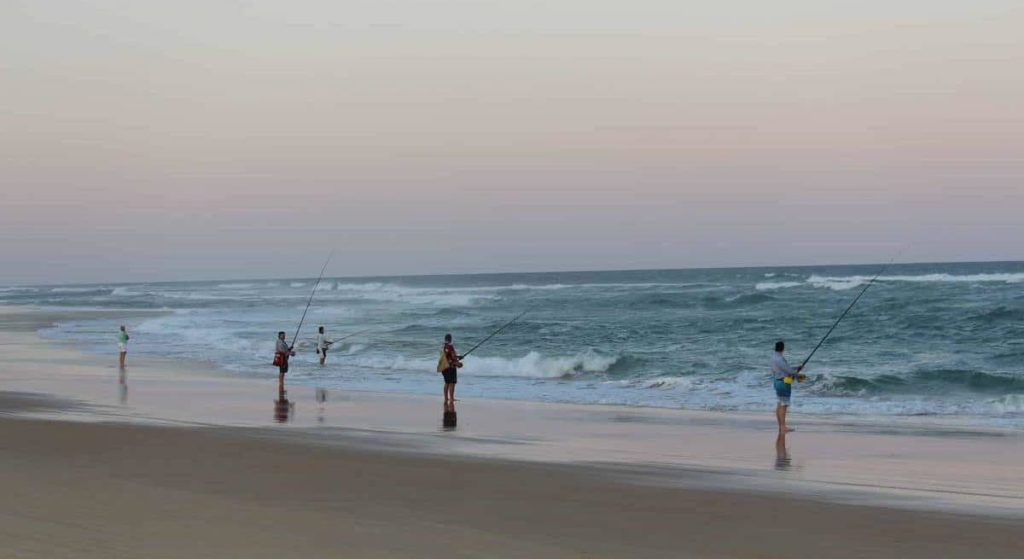
Beaches are typically home to schools of baitfish, which attract large schools of tailor. Many anglers use a wide range of techniques when fishing for tailor from the beach, including casting out lures and baits into deeper water, as well as using surf fishing rigs to target these fish.
If you are looking to try your hand at fishing for tailor from the beach, it is important to have a good understanding of the beach structures and to be able to read the beach gutters and sandbars. Whether you’re targeting tailor from your local beaches or metro beaches, look out for the deeper gutters, the white water areas and birds working the surface beyond the surf zone. You can spot these spots while standing on a sand dune with an elevated vantage point. Typically, these are the most productive areas for targeting big fish, as these are where the schools of baitfish and smaller fish live.
Some great baits to use when fishing from the beach include pilchards, beach worms, pipis and strips of fresh fish fillet. When casting out lures or using a surf fishing rig, you will typically want to cast out an artificial lure or use a surf fishing rig. No matter where you’re targeting your tailor, it’s important to use the right gear, surf rod, reel, along with the right rigs and lures in your tackle box, to catch these fish from the beach successfully.
So if you’re looking to try your hand at catching tailor from the beach, near the ocean rocks or at an estuary, make sure you do your research and take the time to practice. With a bit of patience, skill, and the right knowledge, you’ll be catching some great-tasting tailor in no time!
How To Catch Tailor – Tip #4
What’s the Best Rod To Catch Tailor?
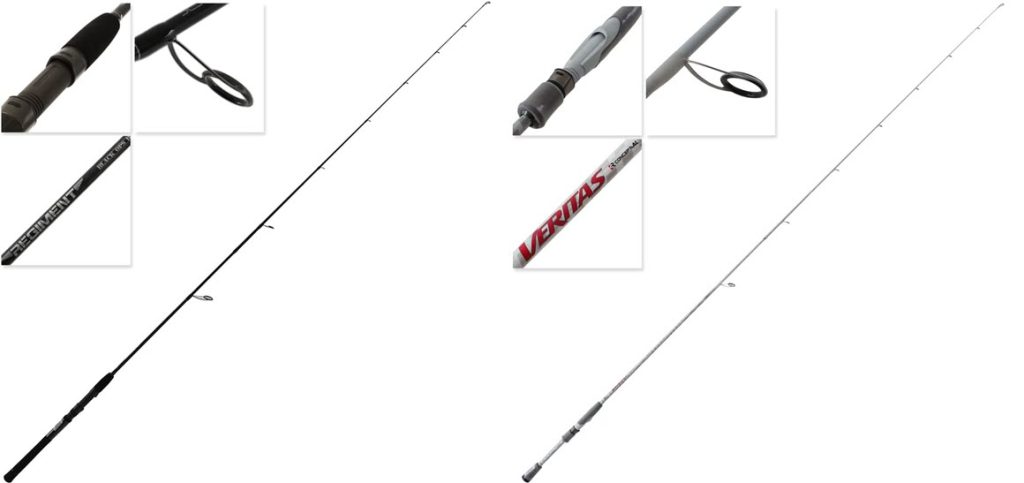
The best rod for catching tailor will vary depending on the type of fishing techniques you plan to use and the fishing conditions. For example, if you’re targeting tailor from the beach, a surf fishing rod that is designed for casting in a surf environment will be ideal, as it will be able to handle the weight of these fish and provide you with the control and accuracy you need to successfully land them. The perfect length for surf fishing rods is usually between 9 and 13 feet, as this will help you cast your lures or bait further out into the water.
However, if you’re chasing tailor from rocks or estuaries, you want to consider using a lighter, shorter rod that is designed for targeting smaller species. In this case, a 4-6kg light spinning rod in between 6 to 9 feet long would be a great option, as it will help you fine-tune your bait and lures and provide you with the control you need to land these fish.
Rods made from high-quality graphite or carbon fibre are typically the best options, as they provide you with the sensitivity and strength you need to feel the bites and fight these fish. Your rod tip should also be flexible and sensitive to help you determine whether a bite is from a small fish or larger tailor.
if you’re predominately going to target tailor with live or dead bait, such as pilchards, yellowtail or herring, it’s important to use a sturdy rod that can handle the weight of these fish. In this case, a 6-8kg medium-heavy rod that is between 8 and 12 feet long would be the best fit. Ultimately, the best rod for catching tailor will depend on your individual fishing style and the specific conditions you plan to be fishing in. With a little research and some practice, though, you’ll be able to find a rod that is perfectly suited for targeting these great-tasting fish!
We know finding the perfect rod can be tricky, as there are so many options out there.
Here are our top recommended rods for catching tailor:
- PENN Prevail II Inshore Spinning Rod
- PENN Regiment Black Ops II SP702ML Spinning Rod 7ft 4-8kg 2pc
- Abu Garcia Veritas 4.0 VRT4-S 702L Softbait Spin Rod 7ft 2-4kg 2pc
- Daiwa Laguna Spinning Rods Model: LAG662MFS (6′ 15.2cm , 2 pc., M)
- Goture 9ft Surf Spinning Rod
How To Catch Tailor – Tip #5
What’s The Best Reel To Catch Tailor?
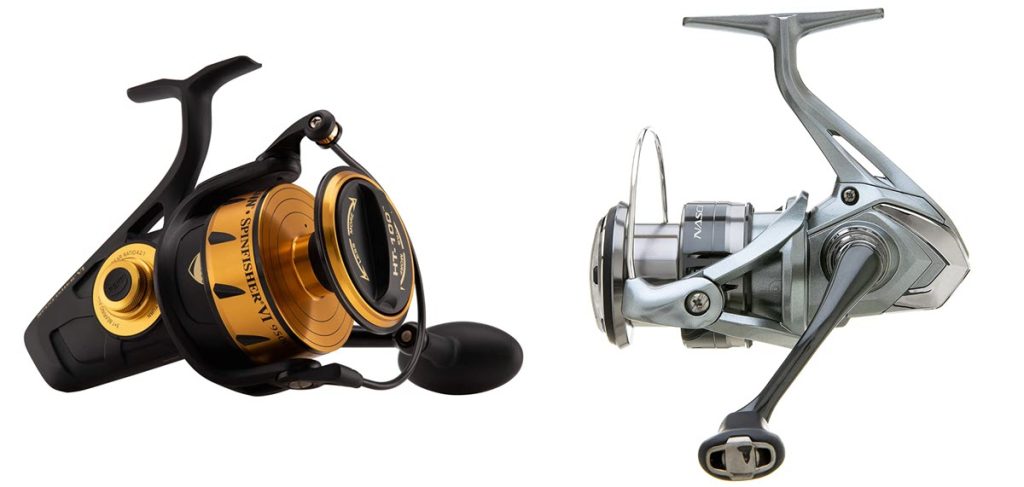
Along with your rod, having the right spin cast reel is essential for targeting tailor. When chasing these fish from the beach or rocks, it’s important to have a reel that is both strong and flexible, so you can land the fish quickly and accurately.
If you’re thinking about using a reel for casting, choose one with a 6:1 gear ratio for faster retrievals. Whereas, if you’re planning on using a live or dead bait, a slower gear ratio may be ideal, it really comes down to personal preference and your fishing style. As a general rule of thumb, remember for bigger, heavier fish, a reel with a slower gear ratio will give you more control over the line and help you land the fish with less effort.
When it comes to materials, it’s best to opt for a reel made from either graphite or titanium. Graphite and carbon fibre are lighter in weight and have greater resistance to corrosion, but aluminium is stronger. Regardless of which you choose, keeping your reel clean is essential. Especially if you fish in saltwater often, be sure to give it a good cleaning after each use. When it comes to reels for targeting tailor, there are a variety of different options on the market.
Some of our top recommendations for reels to use when targeting tailor include:
- Daiwa BG BG3500 Spinning Reel
- Shimano Stradic FL Spinning Reel
- Shimano Sahara C5000 XG FI Spinning Reel
- Shimano Sedona 4000 Spinning Reel
- Daiwa EMCAST 5000 Spinning Reel
- Daiwa Saltist Back Bay LT Spinning Reels
Whether you’re fishing from the beach or rocks, having the right rod and reel is essential for catching tailor. With a little research and some practice, you’ll be able to find the perfect setup that is tailored to your individual fishing style and preferences.
How To Catch Tailor – Tip #6
What’s The Best Line To Catch Tailor?
Along with the right rod and reel, having the right line is another key component in successfully catching tailor. Mono, fluro and braid are all great options for targeting these fish, but the type of line you choose will depend on a number of different factors, including your budget, personal preference, and the specific conditions you plan to be fishing in.
Monofilament Line for Tailor
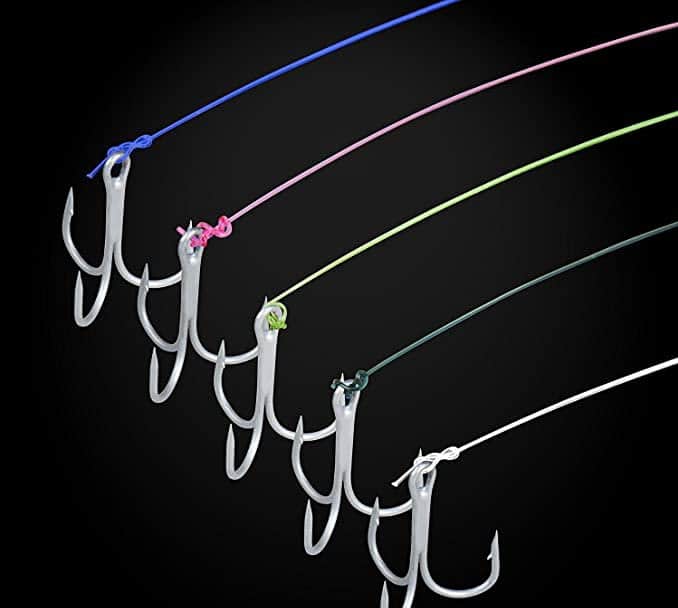
Monofilament line is a great choice if you want something flexible, relatively cheap , and durable. It’s also more forgiving when it comes to knots and tangles, making it a great option for beginners. When it comes to the thickness of your line, there is no one-size-fits all answer.
How thick your line should be will depend on your specific fishing conditions, as well as how large the tailor you’re targeting are. A general rule of thumb is to go with a 6-8kg line with a minimum 15kg leader as tailer fish have sharp teeth and will cause line to break if you’re not careful. You want to be rigged up with a leader that can handle the size of the fish you’re targeting.
Fluorocarbon Line for Tailor
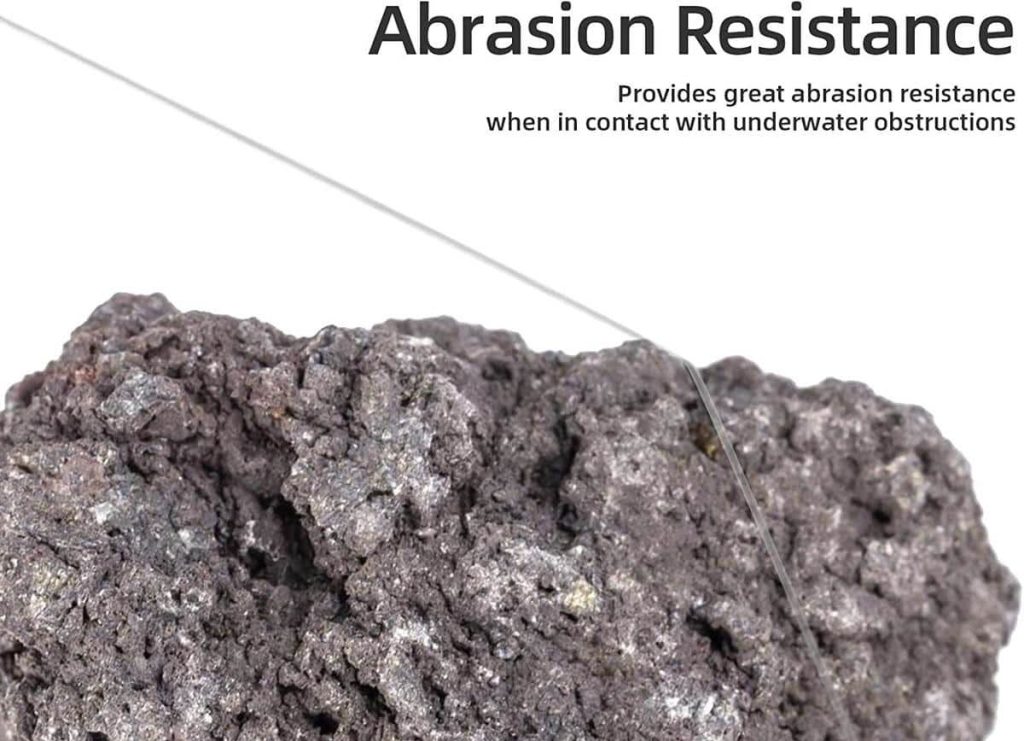
Fluorocarbon line is a great choice if you’re looking for something that is less visible yet still super strong and durable. However, it is also more expensive than monofilament line, so this may be something to keep in mind when choosing your line.
A good compromise would to do run mono as your mainline and use a fluorocarbon leader for added strength and as an extra line of defense against those sharp teeth. An important thing to note with fluorocarbon and mono line is that you need to be careful when tying knots, as it can weaken the line. If you don’t lubricate a fluorocarbon knot properly, the friction from tightening it will cause heat to build up and weaken the line.
With that said, overall, fluoro line is a fantastic choice for targeting tailor and is a favourite of many pro anglers.
Our personal choice for monofilament and fluorocarbon lines for chasing tailor include:
- Berkley Trilene Big Game – Mono Line
- Hi-Seas Quattro Monofilament Line
- KastKing Monofilament Superior Fishing Line
- Stren High Impact Monofilament Fishing Line
- Daiwa J-Fluoro Fluorocarbon Leader
- Berkley Vanish Fluorocarbon
- Seaguar Blue Label Fluorocarbon Fishing Line Leader
- Spiderwire EZ Fluorocarbon Fishing Line
- Yo-Zuri H.D. Carbon Fluorocarbon Leader Line
Braid Line for Tailor

If you’re looking for a line that is strong, thin, and super sensitive, then braid is the perfect option. It also offers the best casting distance, and is a great choice for anglers who enjoy using lures and jigs. However, because braid is so thin, you need to be extra careful when handling it, as it will easily tangle and cause knots. You also need to take special care not to cut yourself on the line, as it is fine yet sharp.
Braid isn’t as abrasion-resistant as some other line types, so you also need to consider your fishing conditions when choosing this option. For example, if you’re planning on fishing near shore in rocky, weedy or snaggy areas, then braid may not be the best option for you. All that said, if you can manage the potential downsides of braid, it’s one of the best choices as a mainline when targeting tailor.
Some of our top recommended braided lines for targeting tailor include:
- Daiwa J-Braid 500M 8-Strand Woven Round Braid Line
- Daiwa J-Braid 300M 8-Strand Woven Round Braid Line
- VARIVAS HighGrade PE x8 Braid Line
- Hercules 8 Strands Braided Fishing Line
- KastKing Superpower Braided Fishing Line
How To Catch Tailor – Tip #7
What Are The Best Rigs To Catch Tailor?
Along with your rod and reel, having the right rig is another key component in successfully catching tailor. When it comes to rigs for tailor, there is no one-size-fits-all answer. How you rig up will depend on factors like what bait you’re using, the conditions of the water, where you’re fishing from, and more.
That said, there are a few key tips that all anglers should keep in mind when rigging up for tailor, such as using swivels and snap weights to reduce line twists and tangles. You’ll also want to consider using floats and rigs with multiple hooks for targeting bigger fish.
Overall, the key is to experiment and find rigs that work best for your specific conditions and style of fishing.
Some of our top recommended rigs for targeting tailor include:
Running Sinker Rig
One of the most popular rigs for targeting tailor is a running sinker rig, which will allow your bait to be free-swimming and more natural looking. This is a great option for most conditions, although it can be less effective if you’re fishing in a very rough, weedy area or if there’s a strong wind.

The running sinker rig involves using a sinker that slides up and down your main line, a swivel connects your leader to the end of your main line, and you can use a variety of hooks to complete the rig. Ganged hooks are a fantastic option as they provide extra protection against tailor, which have sharp teeth and could easily bite through the line. Generally, we’d recommend size 4 gang hooks if you’re targeting smaller tailor and size 6 gang hooks if you’re targeting larger fish.
Wire trace is an optional defence against their sharp teeth but not necessary when using gang hooks as they rarely ever swallow a whole set of gang hooks. A 40-60lb nylon-coated wire trace can be used when there is a high chance of encountering huge tailor. For all other times, you can use a 50-80lb monofilament or fluorocarbon leader. As for what type of bait to use with a running sinker rig, that depends on your personal preference. Some great options which work great with gang hooks include pilchards, whole squid, frozen mullet fillets, silver whiting and more.
All in all, the running sinker rig is one of the best options for targeting tailor, although you may need to experiment a bit with different weights, hooks, and leader lengths to get the perfect setup for your fishing conditions.
Paternoster Rig
Another option is a paternoster rig, which is a popular choice for anglers targeting tailor in rough or weedy areas. It gives you the option of using multiple hooks to increase your chances of landing a fish while also trying different baits to see what’s most effective.

This rig involves using a fixed sinker at the bottom of your main line, with two dropper lines coming off it that hold your hooks and bait. This setup allows your bait to be suspended higher above the bottom, making it less likely to snag on rocks or weeds. As such, this is a great setup for fishing in areas with lots of snags, weeds or rocks.
Also, this rig can be easier to use in rough or windy conditions, as it minimizes the number of tangles you might have with your line. Overall, a paternoster rig is a fantastic option for targeting tailor as it allows you to experiment with different baits and rigs to find what works best.
Whatever rig you choose, always be sure to do your research and practice until you’re able to consistently get that perfect cast and hook up with a big tailor. With the right gear, skills, and know-how, you’ll be well on your way to landing this exciting and hard-fighting fish!
How To Catch Tailor – Tip #8
What Are The Best Baits to Catch Tailor?
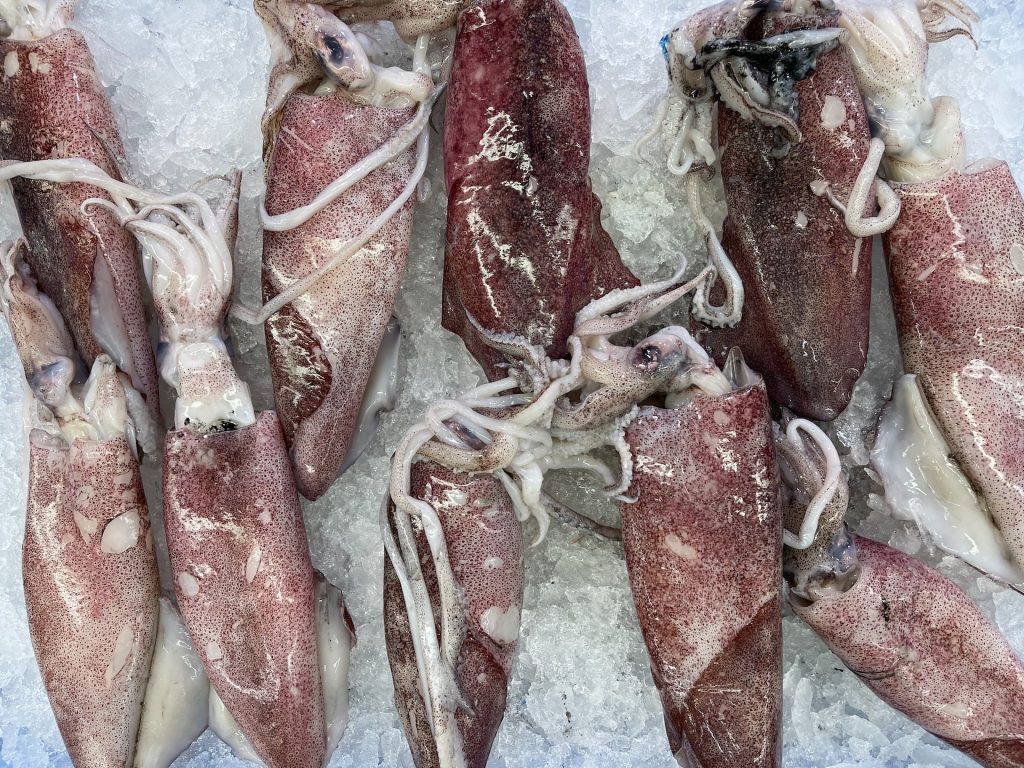
Tailor can be caught on a wide range of different baits and lures, though some are definitely more popular than others. Some of the most effective baits for targeting tailor include bait such as:
- pilchards,
- mullet
- whiting
- herring
- blue baid
- yellowtail scad
- squid,
- fresh prawns,
- beach worms
- strips of any fish
As a general rule of thumb, it is usually best to use baits that are fresh and cut into small, bite-sized pieces. This will make it easier for the tailor to detect and capture your bait, as well as ensure that it stays on your hook for longer.
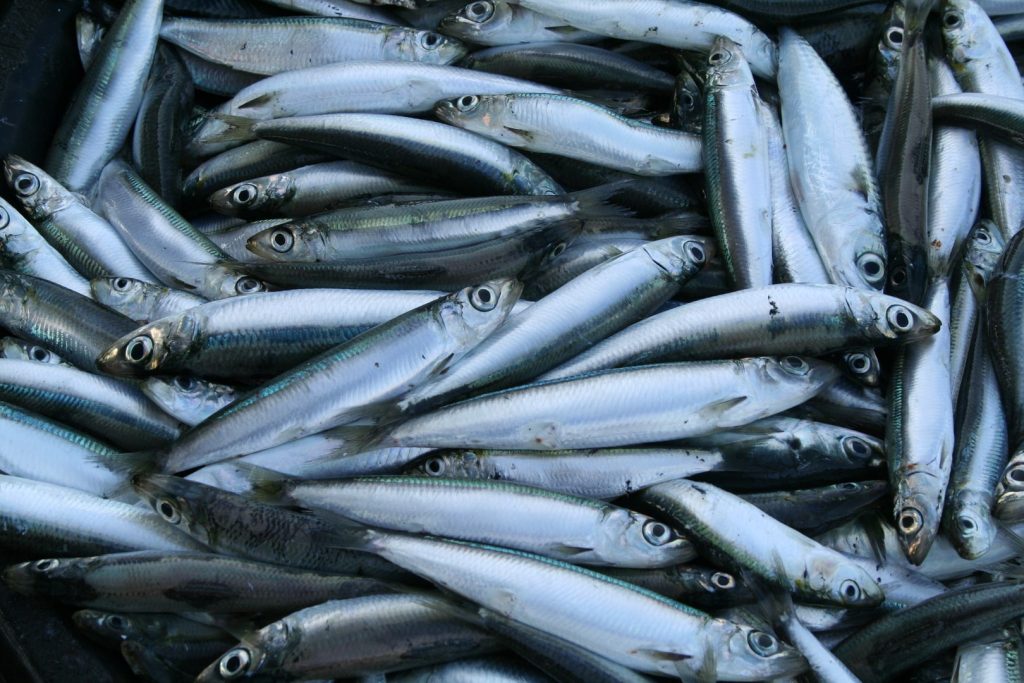
How To Catch Tailor – Tip #9
What Are The Best Lures To Catch Tailor?
When it comes to fishing lures, some of the most popular options include spoons and metal slices, soft plastics, and hard-body lures such as poppers. The type of lure that you use will depend on a number of different factors, including the size and type of tailor you’re targeting, as well as the conditions in which you’ll be fishing.
Metal Lures
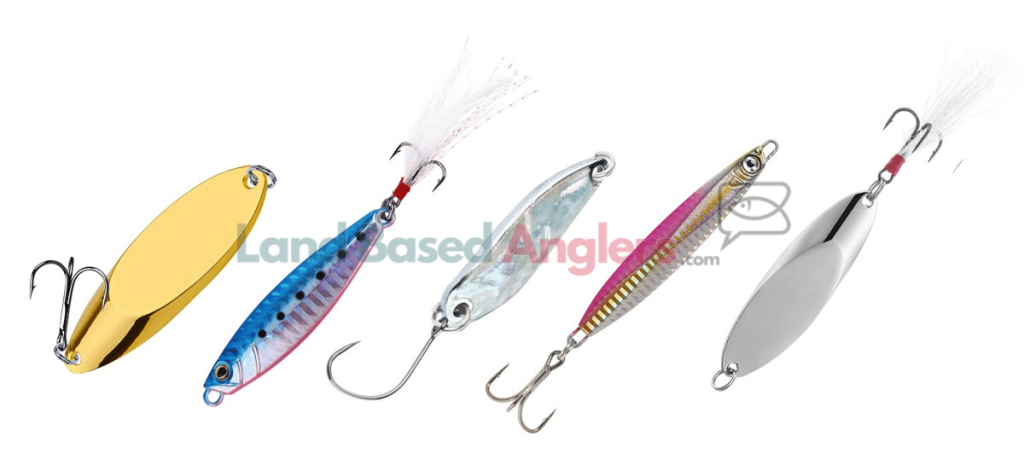
Many anglers prefer to use metal lures when fishing for tailor, as these tend to be very effective at attracting fish. Spoons, jigs and metal lures, in particular, are great choices as they create a lot of movement and vibration that is really hard for the fish to resist. The benefit of metal lures is that they are also relatively low-maintenance, and will also last for a long time.
Also, you can cast them a long distance, which is perfect for targeting the larger fish that tend to stay further out from the shore. When using metal lures, try out different retrieve speeds and patterns to see what works best in the conditions that you’re fishing in.
The following are some of the best metal lures for targeting tailor:
Soft Plastics

Another popular option when it comes to fishing lures for tailor is soft plastic baits. These are particularly effective at mimicking the movement and appearance of small bait fish, and can be used in a variety of different ways. For example, you can jig them up and down in the water, or allow them to sink slowly through the water column.
This makes soft plastics a versatile option that is ideal for targeting all sizes of tailor and can even be used in both saltwater and freshwater environments. When using soft plastics, try out a range of different colours and patterns to find what works best in your fishing conditions.
If you’re looking to target tailor, some of the best soft plastic lures include:
- ZMAN Grubz 2.5″ – 8 Pack Soft Bait – Motor Oil
- Berkley Gulp! Sandworm,Soft Bait – 2in | 5cm
- Berkley Gulp! Minnow Soft Fishing Bait Smelt 3″ – Qty. 12
- Z-MAN Slim SwimZ 2 1/2 inch Soft Plastic Paddle Tail Swimbait 8 Pack
- Z-MAN EZ ShrimpZ 3.5 Inch 4 Pack Unrigged Soft Plastic Shrimp Bait
- ZMAN 2.5″ Slim Swimz Lures- 8 Pack – Elaztech [Colour: Greasy Prawn]
- Zman 2.5 Grubz Electric Pink
Hard-Body & Popper Lures

Finally, hard-body lures such as poppers are another great choice when it comes to targeting tailor. These lures create a lot of noise and movement on the surface of the water, which often helps to attract nearby schools of fish.
As such, they are particularly effective in conditions where the water is a little calmer or when targeting larger tailor that tend to stay near the surface. You’ll want to play around with different speeds and techniques for reeling in your line when you’re using hard-body lures, as each set of fishing conditions is unique. Besides poppers, there are other hard-body lures such as divers and stickbaits that are also great for targeting tailor.

Some of the best hard-body and popper lures for targeting tailor include:
- Atomic Hardz 38 Deep Crank Bait – Purple Shadow
- Atomic Hardz Shiner 85 Double Deep Fishing Lure #Rock Crab
- Daiwa 2020 Infeet Rolling Crank DR 32mm Floating Crankbait Fishing Lure #Blood Worm
- Cranka Lures Cranka Crab
- Savage Gear US-SG 3D Manic Shrimp
- Savage Gear 3D Shrimp RTF Saltwater Sinking Lure
- Savage Gear US-SG TPE Soft Vibe Sinking
- Band-It Series 300 Crankbait Bass Fishing Lures, Chartreuse Black Stripes, (BDT306)
- Yo-Zuri 3DR Shallow Crank Floating 2 3/4 Inch Shallow Diving Crankbait
So whether you’re fishing from the shore, a beach, or from the rocks, there are plenty of different lures and baits that you can use to catch tailor. Just remember to do your research, experiment with different techniques, and be prepared to put in a lot of time and effort if you want to land a big one!
How To Catch Tailor – Final Thoughts
Conclusion
In this article, we’ve covered everything you need to know about how to catch tailor. We’ve looked at the best baits and lures to use, as well as some of the most effective rigs and techniques for targeting these fish. So whether you’re fishing in the surf or from shore, we have you covered!
Always be sure to do your research before hitting the water, practice, and before you know it, you’ll be catching big tailor.
With the right gear, skills, and know-how, you’ll be well on your way to landing this exciting and hard-fighting fish! So what are you waiting for? Get out there and start fishing for tailor today!
You Might Also Like:
If you enjoyed reading this blog post on How To Catch Tailor, you might also be interested in:
- 10 Best Fishing Chairs: Catch Your Breath and Catch Your Fish
- 8 Best Fishing Split Ring Pliers for Serious Anglers
- 8 Best Braid Scissors: Snip Your Way to Fishing Success
- Hooked on Comfort: 5 Best Fishing Stools You Need to Try
- How to Catch Murray Cod: 12 Masterful Tips For Success
- How to Catch Australian Bass | 13 Proven Tips by Pro Anglers
- 10 Best Fishing Pliers All Anglers Need in Their Tackle Box
- How to Catch Bonito: 13 Amazing Tips from Master Anglers
- How to Catch Mangrove Jack: 5 Tips for a Successful Fishing Trip
- 10 Best Waterproof Dry Bags to Keep Your Gear Safe and Dry
- 10 Best Fishing Gaffs for Landing Big Fish Quick & Easily
- 10 Best Waterproofing Sprays to Keep Your Gear Bone-Dry
- 14 Best Live Bait Buckets to Keep Your Fishing Game Strong
- 12 Best Fishing Backpacks for the Avid Angler in 2023
- Best Mono Fishing Line for 2023: Our Top 12 Trusted Picks
Tags:
#How To Catch Tailor For Beginners, ##How To Catch Tailor Guide, #How To Catch Tailor Tips, #How To Catch Tailor Ultimate Guide, #How To Catch Tailor NSW, #How To Catch Tailor On Beaches,

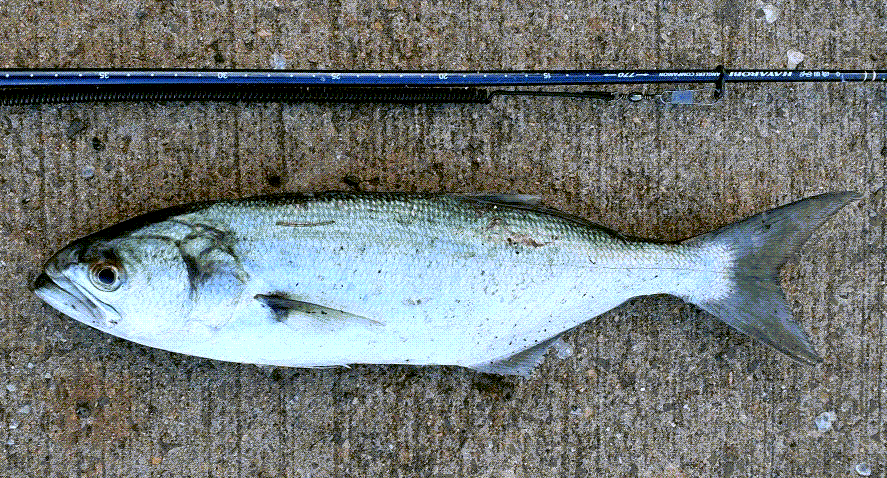
Recent Comments